From time to time, I’m asked how I come up with my blog topics. Well, I do read a lot of books as well as periodicals and they provide a majority of my “inspirations.” However, we are fortunate that many of our readers (domestic and international) of the bi-weekly blogs correspond with us and occasionally, they introduce me to previously unknown people, topics, or events (at least unknown to me). Today’s blog topic is courtesy of Pat P. and the brief subject of his e-mail. Pat is doing some research and had a question about whether a particular British bombing mission over Berlin in July 1942 ever took place. The bombs from this unconfirmed bombing mission supposedly destroyed a building at Giesebrechtstraße 11, Berlin. However the “facts” may unfold, the activities within the walls of that building are legendary and undisputed.
Did You Know?
Did you know that I wrote a blog several years ago called “Rendezvous with the Gestapo?” (click here to read the blog.) It is the story of a B-17 that went down over northern France on 29 May 1943 with nine of its ten crew successfully bailing out of the aircraft. Two of the men (waist gunner George Smith and top turret gunner Hilton Hilliard) were betrayed to the Gestapo and taken to Paris where they were interrogated and likely tortured. After four months in solitary confinement, Smith and Hilliard were transferred to a POW camp where they waited out the remainder of the war. Three of the crew’s offspring contacted me after the blog was published. Hilliard’s daughter wanted me to find the prison and cell her father was kept in. He had carved a message in the cell wall, and she wanted to see it. Spoiler alert: After six months of research, I located his cell and the inscription. Smith’s son, Greg, sent me an e-mail and we have stayed in contact ever since. Greg has quite a collection of war memorabilia pertaining to his father including an original sketch of his father by a fellow POW. Greg found a German website where a photo of his father’s B-17 is posted. The plane had just arrived in England from the U.S. and only the tail number is painted on the aircraft. According to the research department at the Mighty Eighth Museum (click here to visit the museum web-site, it loads slowly), the photo was likely taken by a local citizen working for the Germans as a spy (refer to my blog, Agent Jack, “M” and the Fifth Column, click here to read the blog).

However, one of the most amazing “finds” for Greg was locating the image of his father’s B-17 going down after being hit by flak and enemy aircraft firepower. You can see at least one of the men in the air right after bailing out. The still image came from William Wyler’s 1944 documentary, Memphis Belle: A Story of a Flying Fortress (click here to watch the film). Although billed as the story of the Memphis Belle’s last mission, Wyler filmed the crews’ second to last, or 24th mission. The other thing to know is that a lot of the action footage Wyler used was a compilation of other missions and planes. In fact, Wyler was filming from a B-17 on 29 May 1943 (the Belle had returned to the states) when one of the nearby planes was hit and began its death spiral. He managed to film it and included the footage in the documentary. That plane was the B-17 that George Smith and Hilton Hilliard bailed out of after a successful bombing run over the U-boat pens at Saint-Nazaire. The image was captured in an award-winning painting by Steve Ingraham (which can be purchased if you contact Steve at saingraham@hotmail.com). Through his discussions with Mr. Ingraham, Greg was able to piece together the puzzle about the origin of the photo as well as confirm Wyler’s presence during the Saint-Nazaire mission on 29 May.
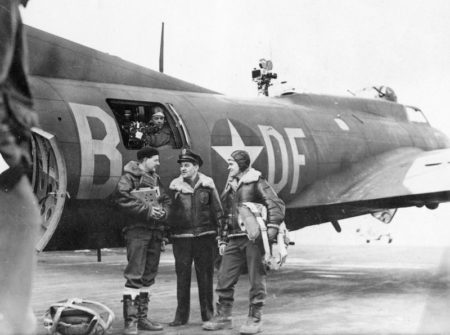

Katherine Schmidt
Katharina Zammit, or Katherine “Kitty” Schmidt (1882−1954) was born into a working-class family. She married, had a daughter (Kathleen), and divorced. Her lack of formal education did not damper her ambition and after years of working the streets, Kitty opened her first brothel in 1922 at Budapesterstraße 27, on the southwest margin of the Tiergarten in Berlin. She never applied for a liquor license despite offering beer, wine, and cocktails to her clients and the authorities closed her business in early 1930. Undeterred, Kitty paid her fine, applied for a new liquor license, and opened her second brothel at Kurfürstendamm 63. (This grand avenue in Berlin was similar to the Champs-Élysées in Paris.) Kitty and Kathleen lived at Budapesterstraße 17.
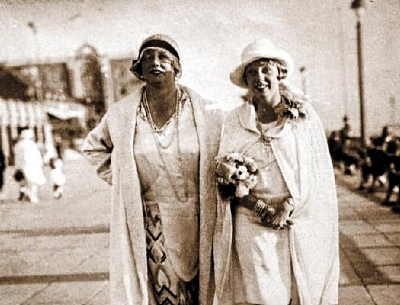
Twenty girls were hired by Kitty for the new brothel along with three domestic staff members. About this time, she began to deposit her money in London bank accounts. Along with legitimate bank transfers, Kitty sent her girls over to London carrying large sums of cash in specially designed corsets. Kitty also helped Jewish refugees flee to London and they carried her currency to be deposited. She was denounced twice for currency smuggling but managed to wiggle out of any trouble. By early 1939, her clients began to complain that the location of the brothel on Kurfürstendamm was too conspicuous, and business began to drop off. So, once again, Kitty moved the location of her business. This time it was to Giesebrechtstraße 11, located in a wealthy section of Berlin, where her clients frequented the new “Pension Schmidt.”
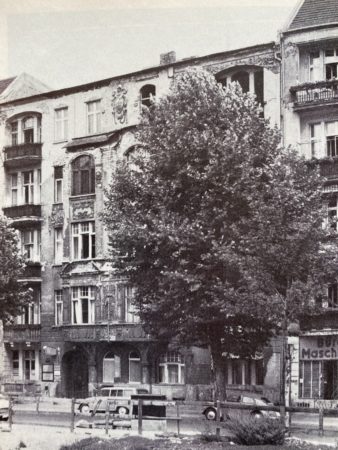
Pension Schmidt was located on the third floor, and it was advertised as a boarding house for actors. Visitors were met by Elvira in a maid’s uniform and taken to the parlor. Kitty would present the client with a photo album of the available prostitutes to choose from. He would make his choice and Elvira would fetch his date.
Sicherheitsdienst
The Sicherheitsdienst (SD) was the intelligence agency for the Nazi party, and its parent agency was the Schutzstaffel (SS). In other words, the SD was the party’s spy machine. (The Abwehr performed a similar function, but it reported to the German military.) The mission of the SD was to keep the top Nazi leaders informed about domestic and international opposition movements. There wasn’t any sphere of influence that eluded the scrutiny of the SD and its agents. As time went on, the SD developed a sinister reputation⏤similar to the Gestapo.
The SD reported to Reinhard Heydrich, head of the Reichssicherheitshauptamt (RSHA), or Reich Security Main Office, until 1942 when he was assassinated. Himmler took control for a year and in 1943, Ernst Kaltenbrunner was promoted to lead the RSHA. (After the end of the war, Himmler committed suicide while Kaltenbrunner was convicted and executed in 1946 as a war criminal.)
During the late 1930s, Heydrich decided a scheme had to be developed to spy on German dignitaries, foreign diplomats, and high-ranking Nazi party members. The purpose was to obtain intelligence as well as determine the true attitudes towards Hitler and the Nazis. Heydrich did not trust most of the senior level Nazis or Wehrmacht generals. Responsibility for devising and executing a plan fell on the shoulders of the head of the SD: SS-Brigadeführer Walter Schellenberg.
Walter Schellenberg
Walter Schellenberg (1910−1952) joined the SS in 1933 and by 1935, he was working for Heydrich in counterintelligence. Over time, Schellenberg became one of Himmler and Heydrich’s most trusted lieutenants. He played a major role in many of the prewar preparations for Hitler’s goal of expanding German territory including the Anschluss with Austria and the invasion of the Sudetenland in Czechoslovakia. After the invasion of Poland in September 1939, Schellenberg was given responsibility for devising a plan for the occupation of Britain after the Germans invaded the island (refer to blog, Professor Dr. Six, click here to read the blog).
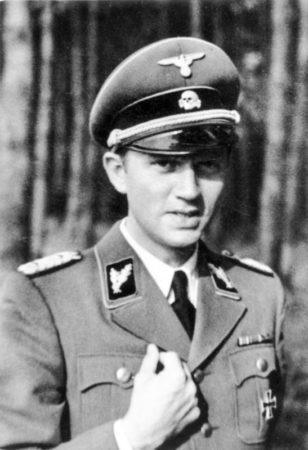
Schellenberg was the focal point for an operation called “Modellhut,” or “Operation Model Hat” that involved Coco Chanel (refer to blog, Coco Chanel: Nazi Collaborator or Spy? [click here to read the blog]). After the war, Schellenberg testified at Nuremberg against the SS and its leaders before his trial and conviction. After serving two of his six years, Schellenberg was released. He wrote his memoirs, The Labyrinth, before dying in 1952. Chanel paid his family a substantial sum of money including paying for Schellenberg’s funeral expenses to ensure her name wouldn’t show up in the book.
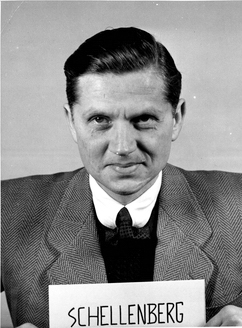

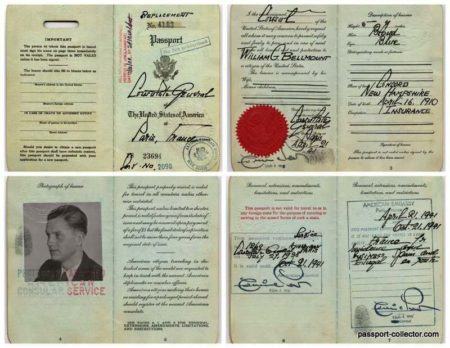
A Deal She Couldn’t Refuse
As soon as the Nazis took power in 1933, Kitty began her money transfers to London. One method was to help Jewish refugees flee the country and she would send money with them to be deposited into her London bank accounts. By 1939, Heydrich and Schellenberg came up with the idea to spy on the dignitaries and their plan revolved around Kitty and Pension Schmidt.
Kitty began to accelerate her money transfers toward the late 1930s and by mid-1939, Kitty decided she had to leave Germany. The SD had broken the code of her messages to the people who were to assist her, and they allowed her to board a train to Holland. At the Dutch border, the Gestapo arrested Kitty on 29 June and took her back to Berlin where she spent two weeks incarcerated in a dungeon cell at Gestapo headquarters on Prinz Albrechtstraße. On 14 July, Kitty was taken from her cell and transported to Schellenberg’s office at Meineckestraße 10 where she met the SD officer for the first time.
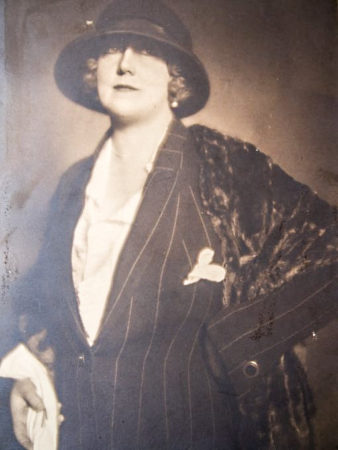
Schellenberg quizzed her about her business. In particular, he wanted every detail on each of the prostitutes working for Kitty. He wanted to know their intelligence levels, what motivated them to work as prostitutes, and how much they earned. Schellenberg finished his interrogation and got to the point.
The SD knew that Kitty had assisted Jews in leaving Germany and Schellenberg pointed out that was a punishable offense. She could face the death penalty or at best, be sent to a concentration camp for life. He also told her the consequences would not be pleasant for smuggling money out of Germany. The third charge against her was the fraudulent passport Kitty used to try and sneak out of the country. Schellenberg calmly told Kitty that he could finish her with a stroke of a pen, or she could cooperate. She acknowledged her predicament and asked him to give her another chance and that she would do anything he asked of her. At that point, Schellenberg offered Kitty a deal she couldn’t refuse.
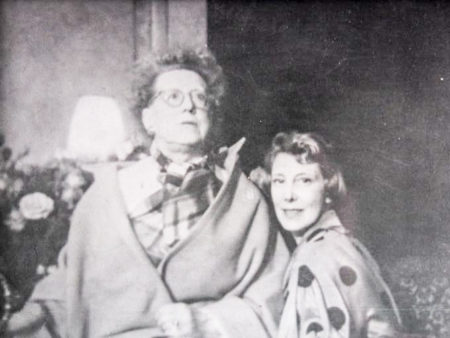
Schellenberg told Kitty that he would return all her belongings (except the foreign exchange taken upon her arrest). Kitty was to remain in Berlin and report in person daily to Schellenberg’s office. She was to carry on as though nothing happened with “business as usual.” Kitty was not to discuss this with anyone and if someone asked questions, they were to be reported immediately to the SD. All staff changes in the brothel were to be discussed with Schellenberg. In return for this, Kitty agreed to carry out any instructions that Schellenberg or his agents gave her. At that point, Kitty was free to leave, and she returned to Pension Schmidt. What she would soon realize was that Schellenberg and the SD now owned her and her business.
Salon Kitty
Kitty quickly brought the brothel back to its original disciplines. It was like nothing had happened. Unbeknownst to Kitty, thirty days later, Heydrich approved Schellenberg’s plan for a top-secret operation code-named “Salon Kitty.” Schellenberg assigned SS-Untersturmführer Karl Schwarz the task of planning and executing the spy operation.
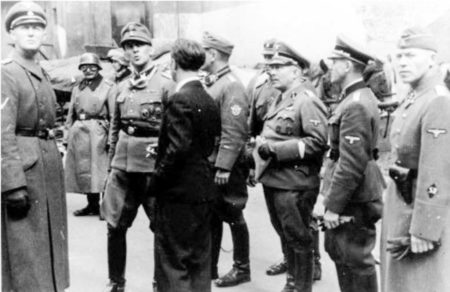
The plan was simple. The SD would take over Kitty’s brothel. They would hire twenty women to work as prostitutes, but they would report directly to Schwarz and Kitty would not have any interaction with them. The rooms would be wired for sound and the basement would be set up as a recording studio.
While being intimate, the women would extract information from their clients. The conversations were recorded and pressed into permanent wax discs with transcriptions of the conversations sent to Schellenberg. Immediately after the client left, the female agent would submit a written report to Schwarz of her session and the information she obtained.
Schwarz made Kitty sign a document whereby she pledged to obey all orders and not to discuss anything. She was also required to report any relevant information to Schwarz. Any transgression on Kitty’s part would result in her death. She signed the form and requested a copy. Schwarz declined and told her to stop by his office any time she felt the need to re-read the document. Days later, Schwarz and his minions began an inspection of the entire premises. Not even Kitty knew the whole plan as each participant in the operation was aware only of their specific responsibilities. Only three SD officers had complete knowledge of Operation Salon Kitty: Heydrich, Schellenberg, and Schwarz.
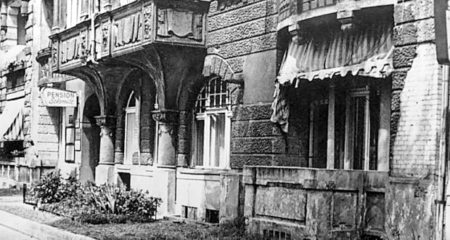
Within several months, Schwarz had hired new prostitutes, wired all the rooms, and setup the clandestine recording studio. Although the specially trained prostitutes were required to submit a written report, they were never told their bedroom activities were being recorded. An album was created containing pictures of the new female SD agents. It was used as a “selection” album for the “targeted” men to pick out their special date for the evening.
The Women
The women employed by Kitty fit into three categories: one third were married, one third were controlled by pimps, and the rest were free-lance. Neither Schellenberg nor Schwarz believed these women were suitable for the work they had planned. So, it was agreed that the SD would hire its own stable of “independent contractors” to supplement Kitty’s girls who were expected to continue entertaining the “normal” customers.
Schellenberg used his position to talk to the heads of departments where he believed potential candidates might be found. SS-Grupenführer Wolff, chief of staff for Himmler and the head of the Lebensborn organization agreed to cooperate. SS-Gruppenführer Arthur Nebe (1894−1945), chief of the Criminal Police (KriPo), also agreed to cooperate by using his vice squads as “employment scouts.” Schwarz struck out trying to get thirty SS and police chiefs to identify potential candidates. They took it more as a joke and after the deadline passed, all of them submitted nil reports. Nebe’s men rounded up fifty women for a first round of interviews with Schwarz.
The qualifications for a successful candidate were (a) intelligence, (b) attractive, (c) a knowledge of foreign languages, (d) faith in the Nazi party, and (e) “a liking for male company.” The women came from all over Germany, from Austria, and other eastern European countries. They were between twenty and thirty years of age with above average intelligence and many were married. Most of them were fluent in three or more foreign languages. There was one common aspect among each of them: they all had a dark past with at least one episode the SD held over their heads.
Twenty women were ultimately chosen. The rest went home but for the remainder of the war, they were under constant surveillance by the police. The selected women were inducted into the SS and swore an oath to Hitler. The women were taken to the Ordensburg Sonthofen in southern Germany for training. Their training included marksmanship, unarmed combat, first aid, the art of conversation, and general intelligence techniques. By the time they “graduated,” each of them knew how to expertly make customers speak about state secrets and their honest opinions. Returning to Berlin, the women were required to live within a ten-minute walk of Pension Schmidt.
The Recordings
For ten days in early 1940, the brothel was shut down to allow the SD to wire the building for microphones. Walls were drilled and grooved to allow for the microphones and wires leading to the basement. The microphones were placed high enough on the walls so they couldn’t be reached. The drawing room and parlor each had two sets of eight microphones. The other rooms had four microphones each. It was set up so that the slightest whispers could be recorded. Every room was bugged except for the bathrooms. The basement listening post had five monitoring desks, each equipped with two turntables. Ten rooms could be recorded simultaneously.
At the same time, Schwarz had the inside refurbished with new wallpaper, curtains, and carpet with the bill for the renovations coming out of Kitty’s pocket. When the clients returned, they registered their approval of the renovations without any knowledge of the real work that took place.
After the war, it was estimated that more than 25,000 recordings on wax discs were made. The location of the brothel came under the control of the East German government and the recordings were supposedly lost.
The Clients
After reopening, nothing about Pension Schmidt appeared out of the ordinary to the regular patrons except the place had been given a make-over which they appreciated. Kitty and her business had developed an excellent (and classy) reputation over the years, so it wasn’t hard for the SD to discretely publicize the brothel. They used trained SD agents to infiltrate Berlin society with the purpose of guiding certain “targets” to the Pension Schmidt.
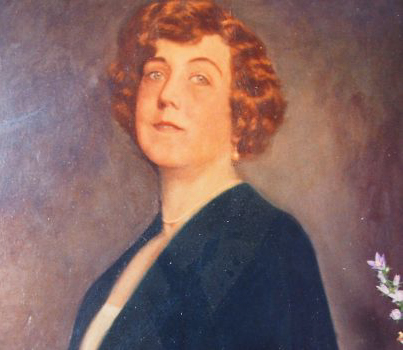
The code word was “Rothenburg.” When a particular man was chosen by Schellenberg or Heydrich to visit Pension Schmidt, the future client was instructed to say “Rothenburg” or “I come from Rothenburg” to the hostess. Kitty would be summoned to meet the Rothenburg client, she would bring the special photographic album, and then assist the client in choosing one of the “special” girls for that evening.
The selected female agent would be notified, walk to the brothel, and meet the client in the parlor. After a drink or two, the couple were taken to one of the bugged rooms and it was the responsibility of Schellenberg’s agent to get the client to talk. The goal was to see who were enemies of Germany and the Nazi party and to get the man to divulge secret information.
Heydrich believed there was a strong undercurrent of disloyalty among top Nazi officials. Soon, German generals, senior Nazi leaders, and high-ranking foreign diplomats began to frequent Pension Schmidt along with famous actors and other celebrities. From a pricing standpoint, Kitty had a problem differentiating the normal clients from the “Rothenburg” clients with respect to the prices charged for services. She was forced to obtain Schwarz’s permission to charge more for the SD’s selected guests. During the first year, it is estimated that about ten thousand “Rothenburg” men visited Salon Kitty.
One of the more talkative clients was Mussolini’s son-in-law and foreign minister, Count Galeazzo Ciano (1903−1944). He did not have favorable things to say about Hitler. (Ciano once mentioned that he and Mussolini joked about Hitler and called him a “ridiculous little clown.”) Ciano was eventually executed under orders from Mussolini. The Spanish foreign minister, Don Ramón Serrano Súñer, was a guest when he let slip to his female host that Spain was about to occupy Gibraltar. The Germans had already come up with their own plan to invade Gibraltar (i.e., Operation Felix) and they successfully blocked the Spaniards’ plan for occupation.
SS-Oberstgruppenführer Sepp Dietrich (1892−1961) managed all twenty women for the entire evening but never revealed any dark secrets. The SD even tested the propaganda minister, Joseph Goebbels. The only dirt they got on Goebbels was his enjoyment watching the women have sex with one another⏤an otherwise anti-social act under Nazi law. (As I’ve always said, “There are two sets of rules. One for those who make the rules and the other set for the rest of us.”) One of the frequent visitors to Pension Schmidt was Reinhard Heydrich. However, strict orders were given to turn off the microphones in his room.
The Demise of Salon Kitty
By 1942, the number of Kitty’s clientele had diminished significantly. She began to lose her “normal” girls because the clients preferred the SD-trained agents. Additionally, Hitler and his cronies had more important things on their plates than spying on the “Rothenburg” men. According to author Peter Norden, a British bomb took out the building in July 1942 and Kitty moved once again to a new facility. One year later, Schellenberg shut down Operation Salon Kitty and turned the brothel back to Kitty but with an ominous warning to remain silent.
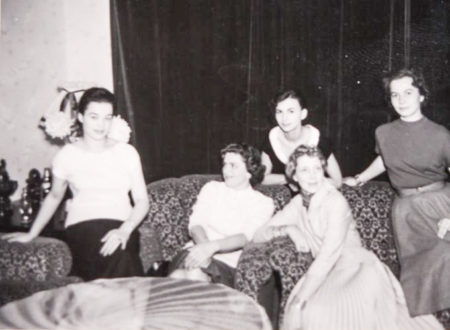
Kitty Schmidt survived the war but never spoke about her arrangement with Schellenberg and the SD. She died in 1954 in her apartment at Giesebrechtstraße 11 and her obituary noted the passing of “the owner of an establishment run along Paris customs and favored arranger of gallant entertainment for foreign guests of the Reich government.” After Kitty’s death, her daughter took over the brothel but changed the name to Pension Florian. (Kathleen was married to Jean-Florian Matei and they had a son, Jochem.) Kathleen passed away in 1992 at the age of eighty-six. After his mother’s death, Jochem (1942−2009) lost the lease at Giesebrechtstraße and the brothel was permanently shuttered.

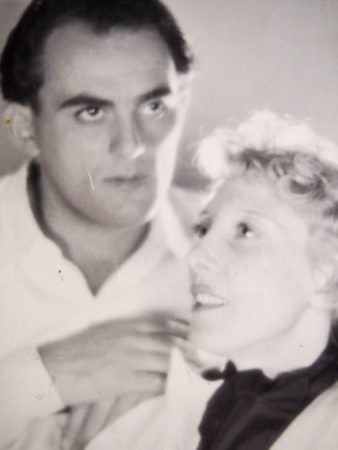
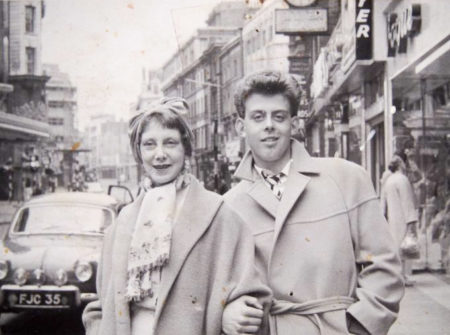
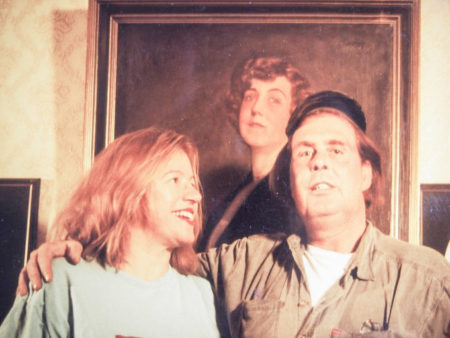
Fact or Fiction
It is difficult to separate fact from fiction in the story of this Nazi spy operation. Salon Kitty did exist, the SD ran the spy operation, and thousands of recordings (and written reports) were obtained that revealed disloyalty and state secrets on both domestic and international levels. A former Salon Kitty worker recalled her boss’s intolerance for stupid women. A personal assistant to foreign minister Joachim von Ribbentrop remembered the hundreds of written reports that crossed his desk from Salon Kitty. A former neighbor described the interior of the salon as “bombastic.” (Ironically, Kaltenbrunner lived next door to the brothel on Giesebrechtstraße.) However, there are some “facts” that don’t seem to measure up.
Written accounts of Salon Kitty, including Norden’s book, report the building at Giesebrechtstraße was bombed and destroyed in July 1942. My research of British RAF records indicates that there were only nine air alerts in Berlin during 1942 and no air raids occurred in July. It wasn’t until 18/19 November 1943 that serious and sustained bombing of Berlin began (i.e., the Battle of Berlin). It was likely the third and fourth floors were bombed in 1943. According to Brunner and Schrammel, Kitty moved her business to the first floor and continued operating as a brothel.
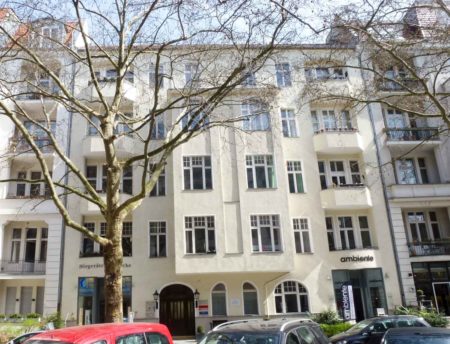
Supposedly, a British agent, Roger Wilson, caught on to what the SD was up to, and he had technical experts tap into the interior wiring. This allowed the British to listen in to the bedroom conversations. I couldn’t find any information to confirm this story nor any accounts of a Roger Wilson. Perhaps he existed and the story is true. If so, it must still be classified information and buried deep within the vaults of British intelligence MI5.
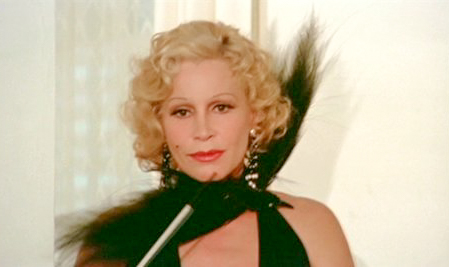
One thing is known. Salon Kitty or Kitty Schmidt never appeared in any official German documentation. I suppose when espionage crosses the line to “sexpionage,” it is handled rather discretely.
★ Learn More About Salon Kitty ★
Brunner, Urs and Julia Schrammel. Kittys Salon: Legenden, Faxten, Fiktion: Kitty Schmidt und ihr berüchtigtes Nazi-Spionagebordell. Berlin: BerlinStory Verlag GmbH, 2020.
Norden, Peter. Translated by J. Maxwell Brownjohn. Madam Kitty. London: Coronet Books, 1974.
Roland, Paul. Nazi Women: The Attraction of Evil. London: Arcturus Publishing Limited, 2014.
Schellenberg, Walter. Translated by Louis Hagen. The Labyrinth: Memoirs of Walter Schellenberg, Hitler’s Chief of Counterintelligence. Cambridge: Da Capo Press, 2000 (originally by Harper & Brothers, 1956). Pages 17-19.
Stephenson, Jill. Women in Nazi Germany. New York: Routledge Publishing, 2001.
Schellenberg’s memoirs include a three-page description of Heydrich’s idea for Salon Kitty and the overall execution of the spy project. Norden’s book is an easy and fun read. However, it should be treated as historical fiction. Unfortunately, Brunner and Schrammel’s book has not been translated. It claims to have found documentation that sheds more light on the actual operation. I may contact the publisher and see if an English translation version is in the works. Click here to visit the author’s web-site.
Disclaimer:
There may be a chance that after we publish this particular blog, the video links associated with the blog are no longer accessible. We have no control over this. Many times, whoever posts the video has done so without the consent of the video’s owner. In some cases, it is likely that the content is deemed unsuitable by YouTube. We apologize if you have tried to access the link and you don’t get the expected results. Same goes for internet links.
What’s New With Sandy and Stew?
This is our last blog for 2021. We would like to thank our subscribers and everyone who reads our bi-weekly blogs on a regular basis. We also appreciate those of you who take the time to reach out to us. Your comments, stories, and connections to the people in our blogs are always interesting. The string of 2022 topics will continue to focus on World War II and in particular, the men and women who fought Hitler and his forces. A concentrated effort will be made to complete and publish the second volume of Where Did They Put the Gestapo Headquarters? sometime next year.
Happy New Year to everyone! Here’s to being able to travel again. 🥂
Thank you to all of you who subscribe to our bi-weekly blogs. It seems there isn’t a day that goes by where we don’t increase our readership. Please let your history buff friends and family members know about our blog site and blogs.
Someone Is Commenting On Our Blogs
I’d like to thank Peter N. from Greenland for contacting us regarding the blog, The White Buses, click here to read the blog. Peter’s father was an eyewitness to one of the bus convoys.
Dean D. got in touch with us about the blog, Camp King, click here to read the blog. Dean’s 94-year-old father was a guard at Camp King. Dean said the hardest part of his dad’s job was staying awake during night duty. Thanks, Dean, for sharing this with us.
After publishing the blog, Paris History Museums (click here to read the blog), we heard from Elizabeth B. She wanted to know how to access the archives associated with the Musée Carnavalet. Elizabeth is a researcher and seems frustrated by not having material available. Elizabeth, I share your angst. The French government restricts access to archival material to only scholars or professional historians.
If there is a topic you’d like to see a blog written about, please don’t hesitate to contact me. I love hearing from you so keep those comments coming.
Why Would You Want to Buy Our Walking Through History Books?
Simple.
You like to travel and experience history and historical events. You like to see original buildings that had a significant impact on the people and events of the history you’re engaged with. You want to know the stories behind the brick and mortar in front of you.
The walking tour books are meticulously researched so you can go directly to those sites and learn about the building’s history as well as an introduction to some of the more interesting people associated with it.
We Need Your Help
Please tell your friends about our blog site and encourage them to visit and subscribe. Sandy and I are trying to increase our audience and we need your help through your friends and social media followers.
Thank You
Sandy and I appreciate you visiting with us. We have some exciting things on the horizon, and we’ll keep you updated as we go along.
Share This:
Follow Stew:
Find Stew’s books on Amazon and iBooks.
Please note that we do not and will not take compensation from individuals or companies mentioned or promoted in the blogs.
 Walks Through History
Walks Through History
Copyright © 2021 Stew Ross

Dear Stew… I just finished reading your most recent blog that includes an update of “Rendezvous with the Gestapo” with new information concerning my father George Smith and Hilton Hillard. I can’t begin to thank you enough for all your research and dedication to keeping the memories of these men alive by telling their story. I consider myself truly lucky to have been able to participate in this process in some small way. The actual combat footage of B-17 JJ-Z Serial No. 4229351 being shot down and the positive identification of this aircraft was a collective effort of several people, including a noted U.S. Army Air Corps historian. Like yourself, Steve Ingram, the artist who painted the picture was also inspired to illustrate what took place in the sky over Saint Nazaire France on May 29, 1943. Cheers…Greg
Hi Greg; Thank you for pointing out the collaborative efforts. Mysteries get solved sometimes in the most amazing ways. STEW